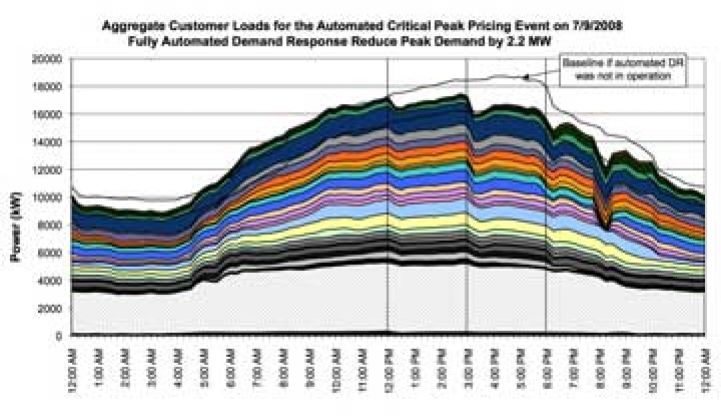OpenADR Alliance isn’t waiting for federal standards to push beyond the edges of California. In fact, it’s gunning to be the national standard. The nonprofit corporation, which fosters the development, adoption and compliance of the Open Automated Demand Response standard, is expecting to have certified interoperable automated demand response products by the end of this year.
The first version, OpenADR 1.0, was developed at Lawrence Berkeley National Lab, which is a member of the alliance. The products, however, will be based on OpenADR 2.0, which is being completed by the Organization for the Advancement of Structured Information Standards, or OASIS.
The second version will ensure interoperability between different software products and the utility’s back end. Having certified products should move the market closer to plug-and-play demand response, according to Girish Ghatikar, Demand Response Standards and Codes Lead at LBNL.
The alliance has more than 30 members in just six months, with Digital Lumens, an LED company, as the most recent addition. Although the standard is only mandated in California, national players, such as EnerNOC, are supporting OpenADR, likely because it is the front-runner to be a national standard.
“Members of the OpenADR Alliance are working quickly to get a testing and compliance program in place by the end of the year,” said Mary Ann Piette, chairwoman of the OpenADR Alliance and research director for PIER Demand Response Research Center at LBNL. “This program will help the National Institute of Standards and Technology (NIST) in the deployment of interoperable Smart Grid standards.
At LBNL, they’re confident that the standard is ready to break out. Sila Kiliccote, Commercial Sector Demand Response Lead at LBNL, said that she’s been traveling east to gauge and garner interest in the standard. NV Energy and Bonneville Power Administration have both identified OpenADR in their smart grid plans, while Con Edison is also using the standard in a demand response pilot that’s currently underway.
The U.S. Green Building Council is also looking into offering demand response credits for LEED-certified buildings, and Kiliccote has been talking with the organization to have OpenADR-based programs approved for those credits.
More than 60 companies have already built products using OpenADR and more will come once a standard is finalized within this year. Although demand response already seems like a busy space, there is a huge gap in solutions for the small commercial market and questions about how demand response will play in regulation and non-spin markets. For the researchers at LBNL, they’re hoping their research will answer some of those questions -- and bring OpenADR to every corner of the market.



